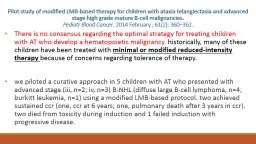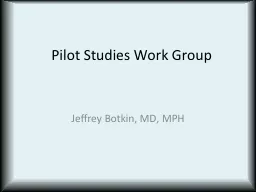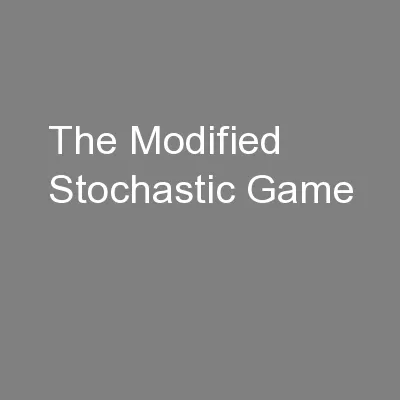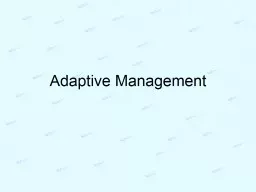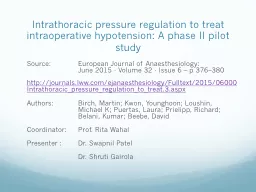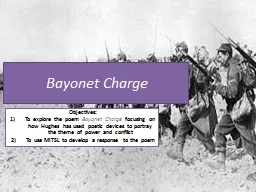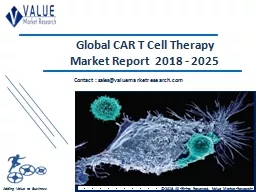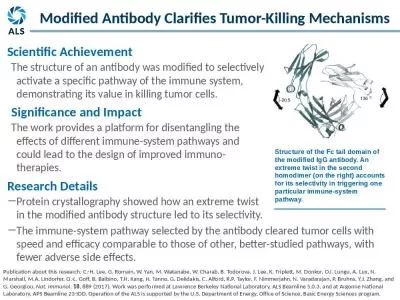PPT-Pilot study of modified LMB-based therapy for children with
Author : giovanna-bartolotta | Published Date : 2020-04-03
ataxia telangiectasia and advanced stage high grade mature B cell malignancies Pediatr Blood Cancer 2014 February 612 360362 There is no consensus regarding
Presentation Embed Code
Download Presentation
Download Presentation The PPT/PDF document " Pilot study of modified LMB-based th..." is the property of its rightful owner. Permission is granted to download and print the materials on this website for personal, non-commercial use only, and to display it on your personal computer provided you do not modify the materials and that you retain all copyright notices contained in the materials. By downloading content from our website, you accept the terms of this agreement.
Pilot study of modified LMB-based therapy for children with : Transcript
Download Rules Of Document
" Pilot study of modified LMB-based therapy for children with "The content belongs to its owner. You may download and print it for personal use, without modification, and keep all copyright notices. By downloading, you agree to these terms.
Related Documents

